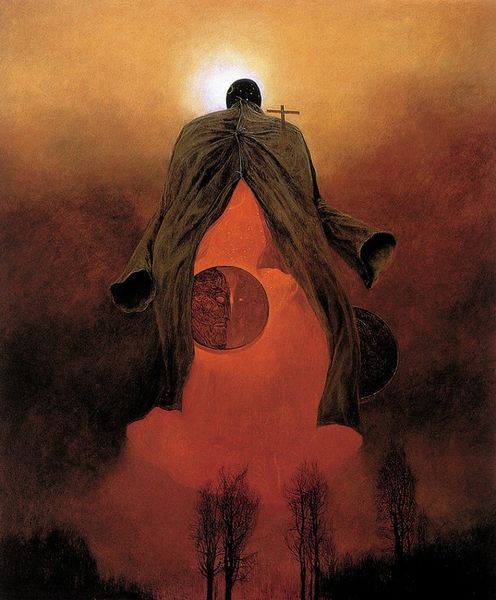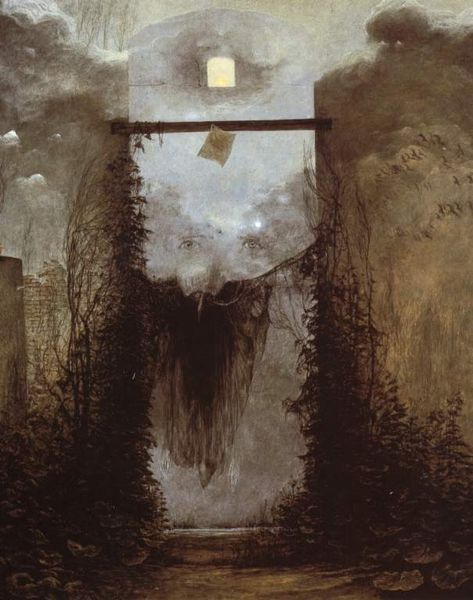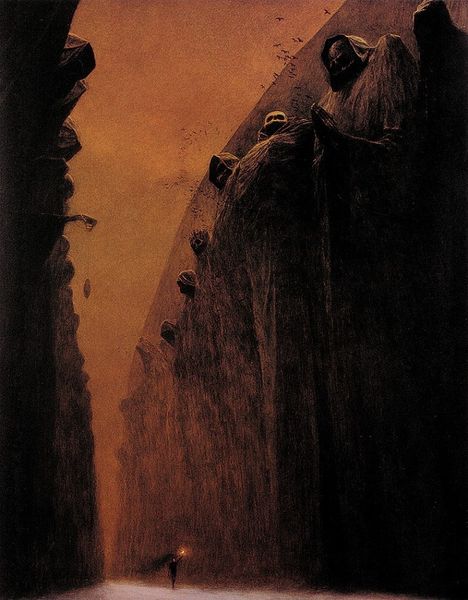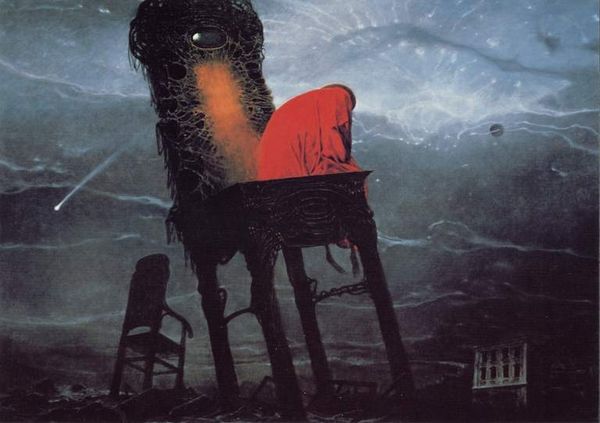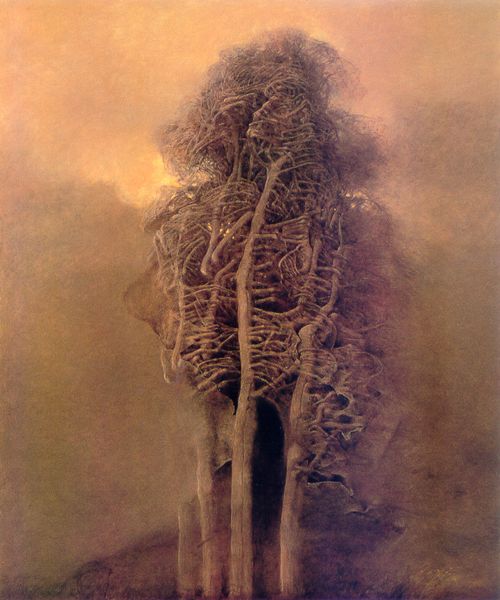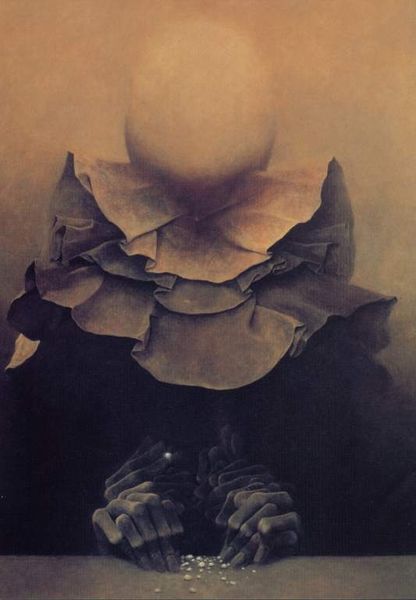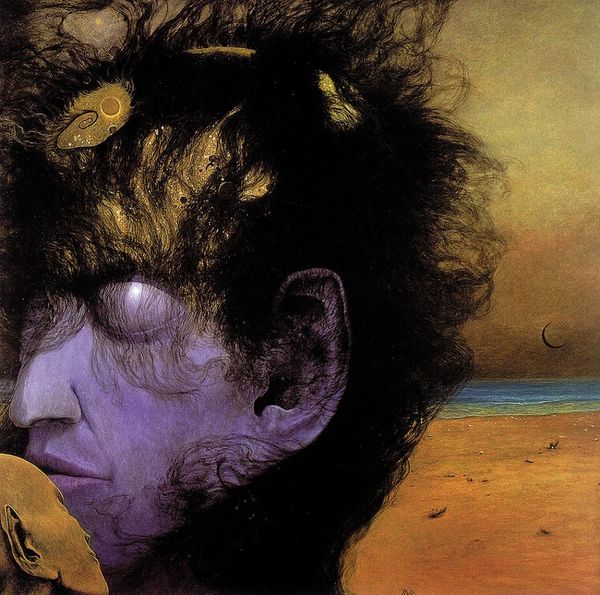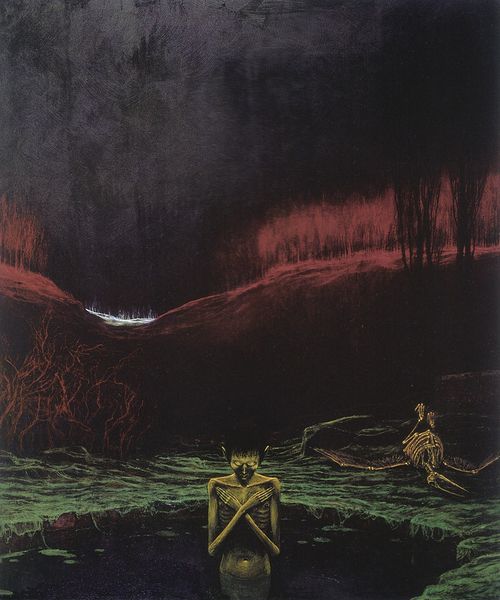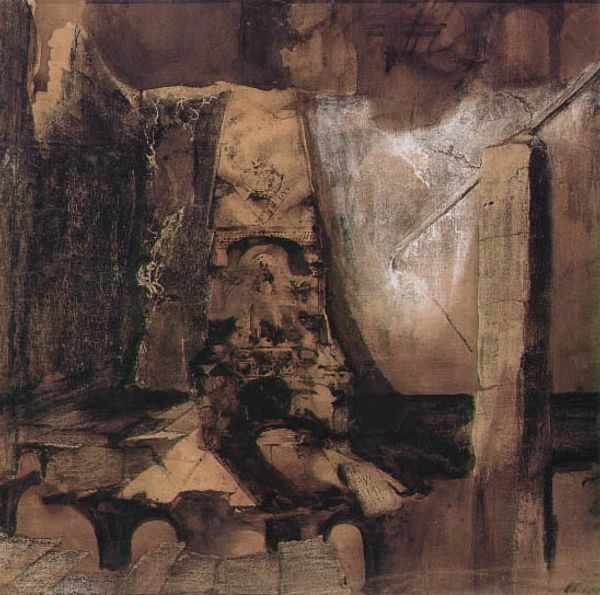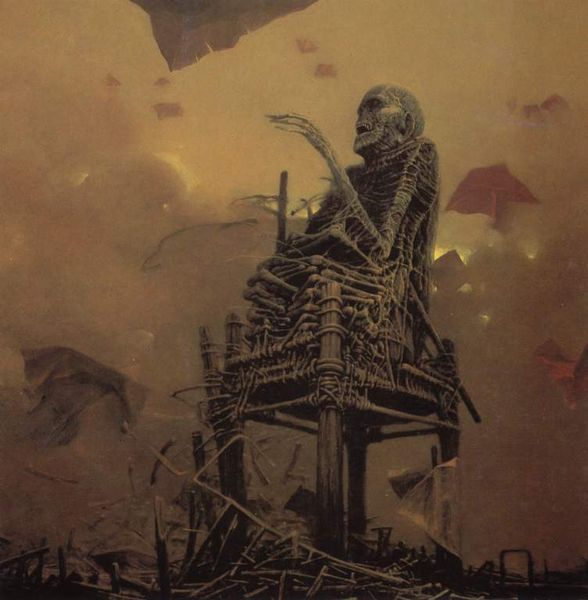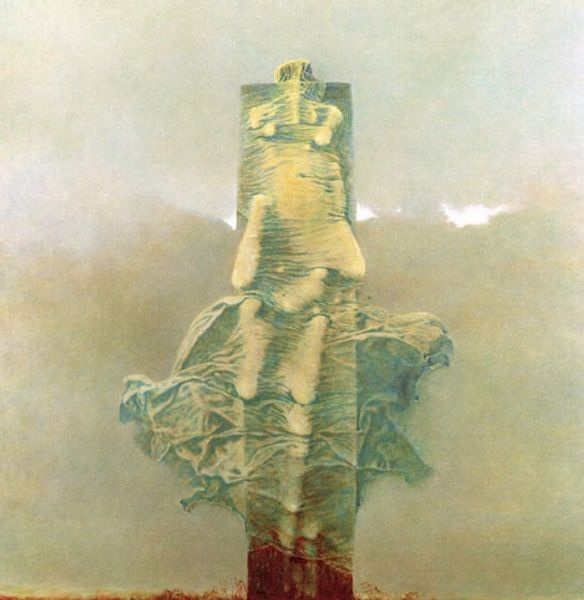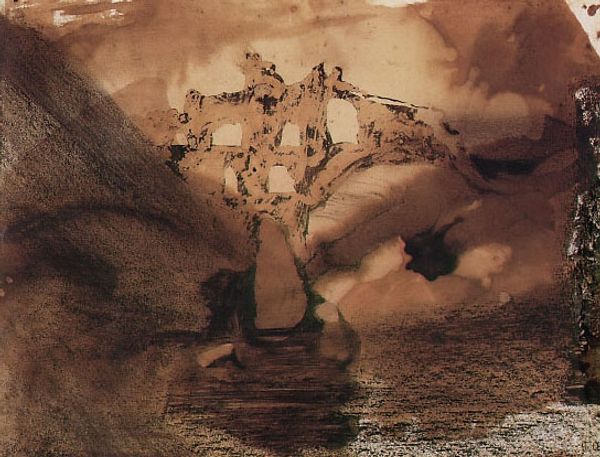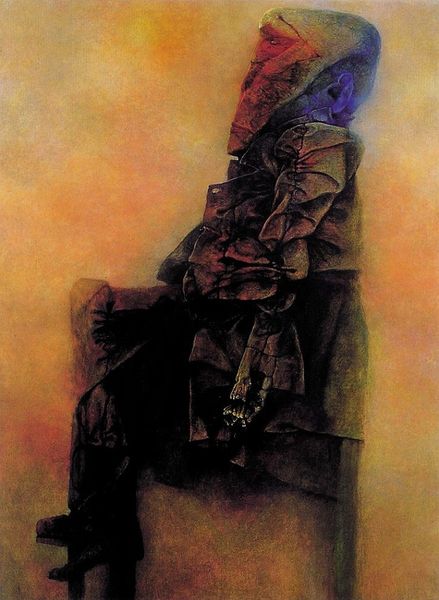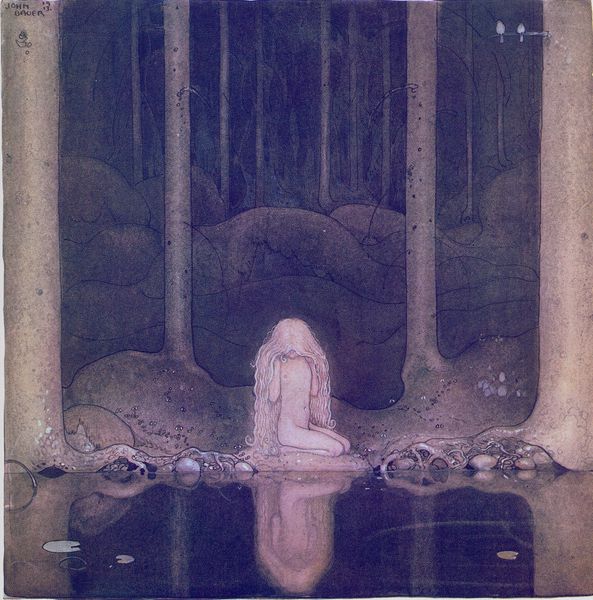
painting, oil-paint
#
allegories
#
abstract expressionism
#
abstract painting
#
allegory
#
symbol
#
painting
#
oil-paint
#
landscape
#
form
#
neo expressionist
#
neo-expressionism
#
symbolism
Copyright: © The Historical Museum in Sanok (Poland) is the exclusive owner of copyrights of Zdzisław Beksiński's works.
Curator: Before us hangs an untitled painting by Zdzislaw Beksinski. It certainly evokes a very particular mood. What are your first impressions? Editor: Dreary, ominous…yet, something about the shimmering, textured surfaces draws you in. Is this primarily oil-based, considering its appearance? The overall sense of scale is hard to determine, I will add, yet it feels vast, in its conception and delivery. Curator: Indeed, Beksinski primarily worked with oil paints, often layering them to create this dreamlike, almost nightmarish, quality. Looking at it through the lens of neo-expressionism and symbolism, Beksinski gives us an allegory for the human condition: themes of death, decay, and existential dread recur across his oeuvre. The lack of a clear title seems intentional. Editor: It’s fascinating how Beksinski pushes oil paint to this limit, right? You have these stark contrasts—that archway versus the void beyond. How much of this comes from Beksinski's process? It must be physically laborious, dragging and layering these textures in the painting itself. You see an embrace, also, of certain traditional techniques in the service of this modern expression. Curator: Precisely. And let’s remember Beksinski lived through the tumultuous times of mid-to-late 20th-century Poland, a period rife with political and social anxieties. This sense of anxiety permeates his artwork. The shadowy structures evoke feelings of entrapment, the spectral figures hint at societal decay, while the symbolism resonates deeply with a culture grappling with trauma. Editor: So much feels embedded here in those deliberate artistic choices and in the sheer materiality itself, doesn't it? It reminds you of those medieval allegorical tapestries or memento mori paintings—translating very real cultural anxieties around labor and value into a kind of embodied experience of form and content, I suppose. Curator: Exactly. Beksinski used allegory to process, confront, and perhaps even transcend these dark realities. His art then is an invitation—almost a provocation—to examine our own perceptions of self and mortality. Editor: Ultimately, reflecting on the method that it took to produce an image like this underscores, for me, how physical this psychological probing really is. Thank you. Curator: A poignant thought to leave with. Thank you.
Comments
No comments
Be the first to comment and join the conversation on the ultimate creative platform.
